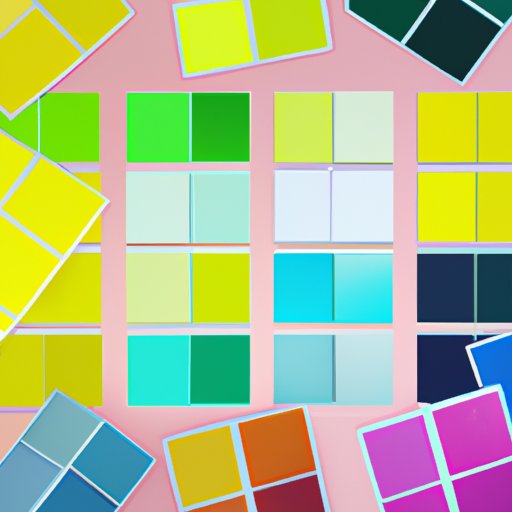
Introduction
Choosing a color palette can be an intimidating task. Whether you’re designing a website, painting a room, or organizing a wardrobe, selecting just the right shades can make all the difference. A well-chosen color palette can convey a mood, create a harmonious look, and even reflect your personal style. In this article, we’ll explore how to find your color palette and offer tips and ideas for creating a personalized color scheme.
Start with an Inspiration Piece
When it comes to creating a color palette, inspiration can come from anywhere. Sometimes, all it takes is one inspiring piece to get your creative juices flowing. This inspiration piece can be anything from a photo of nature to a piece of art to a fabric swatch. Starting with an inspiration piece can help set the tone for your color scheme and guide your choices.
Determine Your Mood
Mood is an important factor to consider when choosing a color palette. The colors you select can convey a range of emotions, from calm and peaceful to bold and energetic. Determining the mood you want to convey can help guide your color choices. Consider the purpose of the project you’re working on and the feelings you want to evoke. For example, a calming color palette might work well for a bedroom, while a bright and bold color scheme might be better suited for a children’s playroom.
Take a Walk Outside
Nature is a great source of inspiration when it comes to color selection. Taking a walk outside and observing the colors around you can provide ideas for your color palette. Pay attention to how colors appear in nature and how they interact with each other. Take note of the colors in the sky, the leaves on trees, and the flowers in gardens. Using colors found in nature can create a cohesive and natural look in your color scheme.
Experiment with Color Pairing
Pairing colors can be a fun and creative process. Experimenting with different color combinations can lead to unexpected and unique results. Try selecting contrasting colors, such as blue and orange, or complementary colors, such as blue and green, for a bold look. For a more subtle approach, consider using analogous colors, such as pink and purple, or monochromatic colors, such as shades of blue. Remember that color pairing is a matter of personal preference, so don’t be afraid to experiment until you find the perfect combination.
Use Color Theory
Color theory is an important concept to understand when creating a harmonious color palette. This theory explains the relationship between colors and how they interact with each other. The basics of color theory include primary colors, secondary colors, and tertiary colors. Primary colors are red, blue, and yellow, while secondary colors are created by mixing two primary colors together. Tertiary colors are created by mixing a primary color with a secondary color. Understanding color theory can help you choose colors that complement each other and create a cohesive look.
Consider Your Personal Style
Your personal style can play a big role in selecting colors. Whether you prefer a bold and vibrant look or a subtle and understated aesthetic, your color palette should reflect your personal style. Take a look at the colors you normally gravitate towards in your wardrobe and decor to guide your decisions. If you’re unsure of your personal style, try taking a style quiz to help identify your preferences.
Look for Existing Color Palettes
Finding inspiration from existing color palettes can also be a great starting point. There are a variety of websites that offer pre-made color schemes for different purposes, from website design to interior decorating. Some popular websites for finding color palettes include Coolors, Design Seeds, and Adobe Color. While pre-made color palettes can be a helpful starting point, remember to add your personal touch to create a unique and personalized color scheme.
Conclusion
Creating a personalized color palette takes time and effort, but it’s worth it in the end. By following these tips and guidelines, you can find inspiration and create a color scheme that reflects your individual style and mood. Don’t be afraid to experiment and try new things. With a bit of creativity and inspiration, you can create a color palette that is truly one-of-a-kind.





